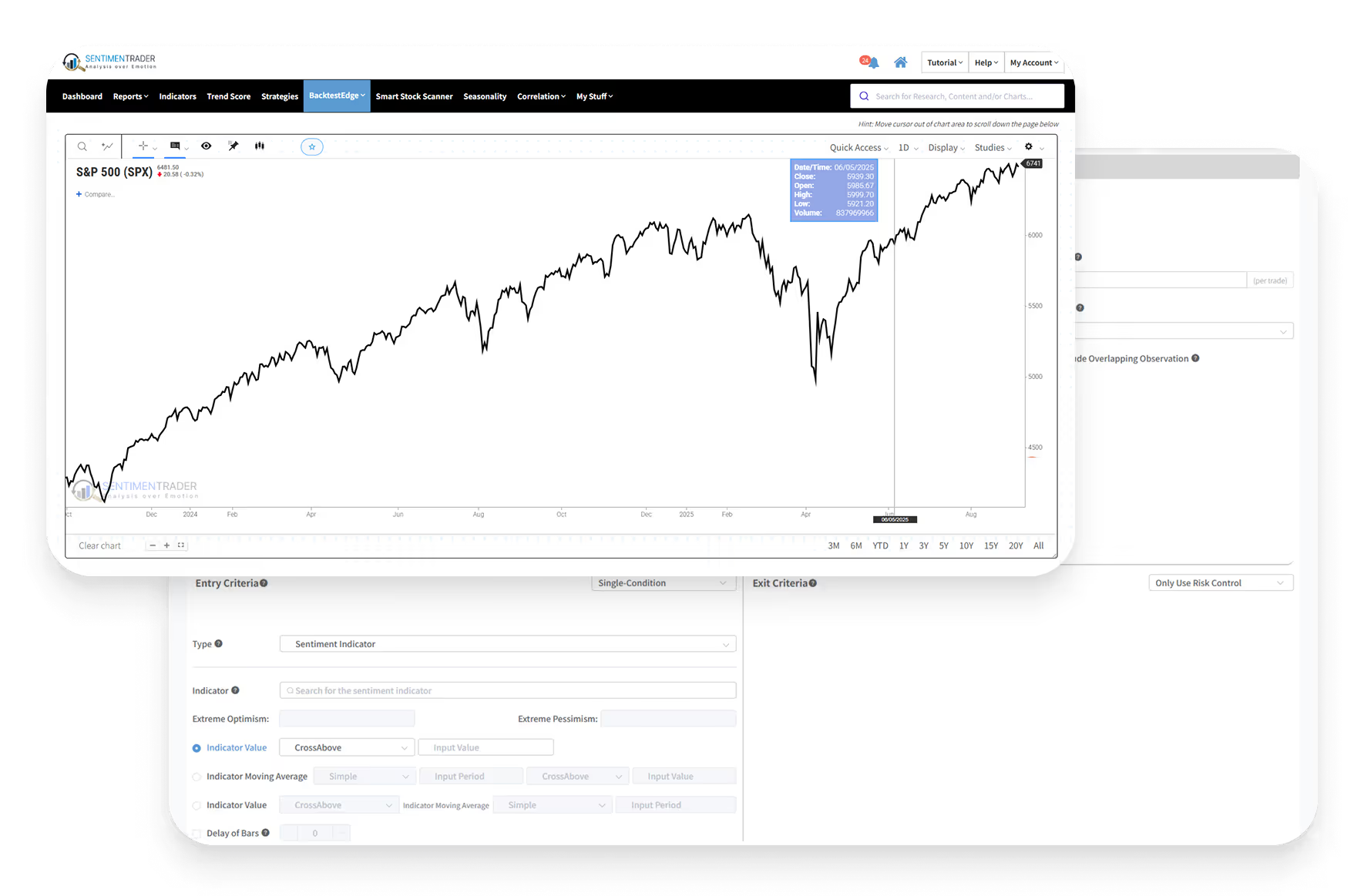Technical Indicators
Technical indicators provide a structured way to interpret market behavior beyond daily price noise. They help traders understand how prices evolve over time and what drives changes in direction, strength, and participation.
This section groups commonly used indicators into four main categories — Trend, Momentum, Volatility, and Volume — each highlighting a different aspect of market dynamics and how traders can apply them for data-driven analysis.
Trend Indicators
Trend indicators smooth out short-term fluctuations to reveal the underlying market direction. They help traders confirm whether an asset is trending higher, lower, or moving sideways, offering a structured view of price behavior across timeframes.
Included Indicators:
Momentum Indicators
Momentum indicators gauge the speed and persistence of price movement. They highlight when trends are gaining strength or losing momentum, helping traders spot potential continuation or reversal conditions within existing market moves.
Included Indicators:
Volatility Indicators
Volatility indicators measure how widely prices fluctuate over time. By showing periods of contraction and expansion, they help traders recognize when markets may be overextended, poised for breakouts, or entering calmer phases.
Included Indicators:
Volume Indicators
Volume indicators interpret trading activity to validate price trends. They reveal how participation changes during rallies or declines, helping traders assess the conviction behind market moves and potential divergences between price and volume.
Included Indicators:


